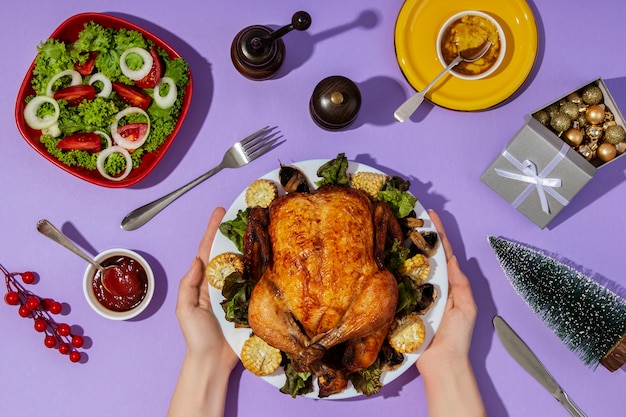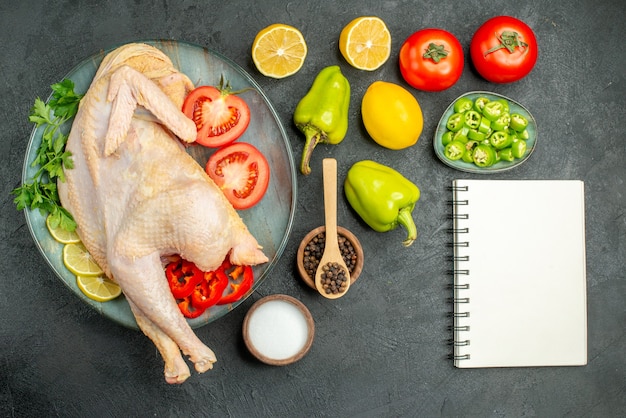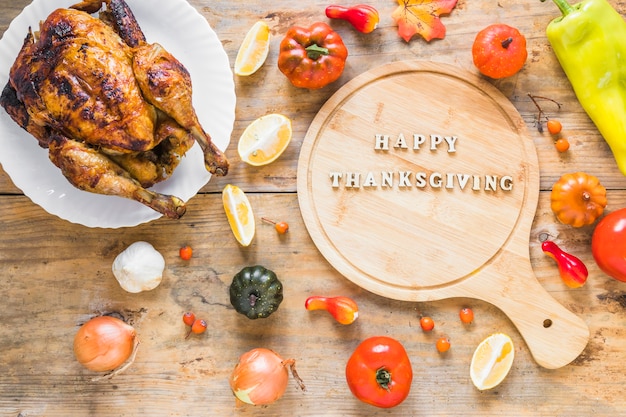(Part 1) Choosing the Right Chicken

Picking Your Perfect Poultry
Before you even think about preheating your oven, you need to choose the right chicken. Just like you wouldn't use a rusty old nail to hammer a nail, you wouldn't want to start with a subpar bird.Head to your local butcher or supermarket and look for a chicken that’s plump, with a nice, even colour. Avoid any that look dry or have any strange discolouration. You want a chicken that's fresh, firm to the touch, and smells clean – no funny odours, please!
whole chicken vs. chicken pieces
Now, let's talk about the big decision: whole chicken or chicken pieces? I'm a sucker for a good whole roast chicken, but it can be a bit intimidating for beginners. If you're just starting out, chicken pieces are your best bet.chicken breasts are a popular choice, but remember they can be a bit dry if overcooked. chicken thighs, on the other hand, are more forgiving and stay juicy even after a bit of a mishap.
Don't be afraid to experiment! Try different cuts of chicken and see what you like best. You might discover a new favourite!
Organic vs. Non-Organic
organic chicken is all the rage these days, and I understand why. It’s about raising chickens in a humane and healthy way. However, let's be real, organic chicken can be quite a bit more expensive.If your budget allows, go for it! But if you're on a tight budget, don't feel like you're sacrificing flavour by choosing non-organic. Just make sure to wash the chicken thoroughly and get rid of any excess fat before cooking.
(Part 2) Preparing Your Chicken

Washing and Drying
Alright, you've got your chicken, now it's time to prep it for cooking. First things first, give it a good wash. Use cold water to rinse the chicken inside and out. Be sure to pat it dry with kitchen paper. This will help prevent splattering and ensure that the chicken browns nicely when you cook it.Removing Excess Fat
Now, let's talk about fat. While a bit of fat is good for flavour, too much can make your chicken greasy. Use a sharp knife to trim off any excess fat. Don't be afraid to get rid of that thick layer of fat – trust me, your chicken will thank you.Seasoning Your Chicken
This is where the fun begins! I'm a big fan of a simple salt and pepper seasoning, but feel free to experiment with different herbs and spices.Try a classic rosemary and garlic mix, a zesty lemon and herb blend, or even a spicy paprika and cumin combo. The possibilities are endless!
Pro tip: Let the chicken sit in the fridge for a couple of hours to allow the flavours to penetrate. It's all about that marination, you know?
(Part 3) cooking chicken in the Oven

Oven-Roasted Chicken
Roast chicken – the classic, the comforting, the irresistible. It’s perfect for a Sunday dinner or a weeknight meal.Here’s how I do it:
- Preheat your oven to 180°C (350°F).
- Place the chicken in a roasting pan.
- Drizzle with olive oil and season with salt, pepper, and whatever herbs you fancy.
- Pop it into the oven and roast for about 1 hour and 15 minutes, or until the juices run clear when you pierce the thickest part of the thigh with a skewer.
- Let it rest for 10 minutes before carving. This will allow the juices to redistribute and ensure the chicken stays tender.
roasting temperatures and Times
For whole chickens, aim for an oven temperature of 180°C (350°F) and roasting time of about 1 hour and 15 minutes.For chicken pieces, reduce the roasting time to around 30-45 minutes, depending on the size and thickness. Remember, it's always better to undercook than overcook.
Tips for Juicy Oven Chicken
Now for some tricks to make your roasted chicken super juicy:- Place a few slices of lemon or onion in the cavity of the chicken. This adds moisture and flavour.
- Baste the chicken every 20 minutes with pan juices to keep it moist.
- Use a meat thermometer to ensure the chicken is cooked through. The internal temperature should reach 74°C (165°F) for safe consumption.
(Part 4) Cooking Chicken on the Grill
grilling chicken to Perfection
Grilling chicken is a delightful way to enjoy a smoky, chargrilled flavour.Remember to preheat your grill for at least 10 minutes before placing the chicken on it.
For whole chickens, spatchcock them (remove the backbone and flatten the bird) for faster and more even cooking.
grilling tips for tender chicken
- Don't overcrowd the grill. Give the chicken enough space to cook evenly.
- Use a grill brush to clean the grill grates before cooking.
- Flip the chicken once or twice during cooking to ensure it cooks evenly on both sides.
- Use a meat thermometer to check the internal temperature of the chicken.
Marination Magic
A marinade can really make your grilled chicken pop! Here are a few of my favourite combinations:- Soy sauce, ginger, garlic, and honey: This marinade delivers a sweet and savory punch.
- Lemon juice, olive oil, and fresh herbs: Fresh and zesty, this marinade is a classic choice for grilled chicken.
- Yoghurt, turmeric, and garam masala: This Indian-inspired marinade adds a touch of exotic spice to your chicken.
(Part 5) cooking chicken on the stovetop
pan-seared chicken
Pan-searing is a great way to get a crispy, golden-brown crust on your chicken.Here’s the deal:
- Heat a large skillet or frying pan over medium-high heat.
- Add a tablespoon of oil, butter, or a combination of both.
- Once the oil is shimmering, add the chicken skin-side down.
- Don't move the chicken for at least 5 minutes – let it develop a nice crust.
- Reduce the heat to medium and cook for another 5-7 minutes, or until the chicken is cooked through.
Tips for Perfect Pan-Seared Chicken
- Pat the chicken dry before cooking to ensure a crispy crust.
- Don't overcrowd the pan. If you need to cook the chicken in batches, do so.
- Use a meat thermometer to check the internal temperature of the chicken.
(Part 6) Cooking Chicken in the Air Fryer
air-fried chicken – The Easy Way
The air fryer is a game-changer for chicken, I tell you. It's fast, it's easy, and it results in crispy, juicy chicken without the need for a lot of oil.Here's what you need to do:
- Preheat your air fryer to 200°C (400°F).
- Place the chicken pieces in the air fryer basket, ensuring they are not overcrowded.
- Cook for 10-15 minutes, or until the chicken is golden brown and cooked through.
air fryer tips and tricks
- Toss the chicken in a little oil before air frying to help achieve that crispy texture.
- Shake the basket halfway through cooking to ensure even browning.
- Use a meat thermometer to check the internal temperature of the chicken.
(Part 7) Understanding chicken doneness
how to tell if chicken is cooked Through
It's crucial to make sure your chicken is cooked through to avoid food poisoning. There are a few ways to tell if it's done:- The Colour Test: Cooked chicken will have a white or pale yellow colour throughout.
- The Touch Test: Cooked chicken will feel firm to the touch.
- The Juice Test: When you pierce the thickest part of the chicken with a knife or skewer, the juices should run clear, not pink.
- The Thermometer Test: This is the most reliable way to check for doneness. Insert a meat thermometer into the thickest part of the chicken (avoiding bone), and it should register at 74°C (165°F).
The Dangers of undercooked chicken
Undercooked chicken can harbour harmful bacteria that can cause food poisoning. This can lead to symptoms like nausea, vomiting, diarrhoea, and abdominal cramps.It's always better to be safe than sorry, so make sure your chicken is cooked to the right temperature.
(Part 8) Chicken Leftovers: Storage and Reheating
Storing Leftover Chicken
Leftover chicken should be stored in the refrigerator within 2 hours of cooking.Place it in an airtight container and refrigerate it for up to 3-4 days.
reheating leftover chicken
There are a few ways to reheat leftover chicken:- The Oven: Preheat your oven to 160°C (325°F) and bake the chicken for about 15-20 minutes, or until heated through.
- The Stovetop: Heat a skillet over medium heat and add the chicken. Cook for about 5-7 minutes, or until heated through.
- The Microwave: Place the chicken in a microwave-safe dish and heat on high for 1-2 minutes, or until heated through.
Remember, reheated chicken should be cooked to an internal temperature of 74°C (165°F).
(Part 9) Tips for Cooking Chicken Like a Pro
Chicken Cooking Essentials
Here's a list of essential tools and equipment that will help you cook chicken like a pro:Tool Purpose Sharp knife For trimming excess fat and carving chicken. Choose a good quality knife that can handle both cutting through bone and making precise cuts. Cutting board For preparing and cutting chicken. Invest in a sturdy cutting board, ideally made of wood or plastic, that can withstand the rigors of chicken prep. Roasting pan For roasting whole chickens or chicken pieces. Choose a roasting pan that is large enough to accommodate your chicken comfortably. Skillet or frying pan For pan-searing chicken. A heavy-bottomed skillet or frying pan will distribute heat evenly and prevent hot spots, ensuring even cooking. Air fryer For crispy, juicy chicken. An air fryer is a great way to achieve that crispy texture without using a lot of oil. Meat thermometer For ensuring the chicken is cooked to the right temperature. A meat thermometer is an indispensable tool for ensuring that your chicken is cooked through and safe to eat. Chicken cooking tips
Here are some tips to help you cook chicken like a pro:- Don't overcrowd the pan or grill. Give the chicken space to cook evenly. Overcrowding can lead to uneven cooking and steaming rather than browning.
- Use a meat thermometer to check for doneness. This is the most reliable way to ensure your chicken is cooked through. Don't rely on visual cues alone.
- Let the chicken rest before carving. This will allow the juices to redistribute and keep the chicken moist. A resting period is essential for ensuring a tender and juicy result.
- Don't be afraid to experiment with different herbs and spices. Chicken is a blank canvas, so have fun with it! Don't be afraid to get creative with different flavour combinations.
- Most importantly, enjoy the process! Cooking chicken should be a fun and rewarding experience. Relax, experiment, and have fun in the kitchen!
FAQs
Q: How long should I cook chicken for?
The cooking time for chicken depends on the size and thickness of the bird and the cooking method. For a whole chicken, roast for about 1 hour and 15 minutes at 180°C (350°F). Chicken pieces will take around 30-45 minutes, depending on the size and thickness. Always use a meat thermometer to ensure the chicken is cooked through.
Q: What are the signs of undercooked chicken?
Undercooked chicken will have a pink colour in the middle and will feel soft to the touch. The juices will also run pink. It's important to cook chicken to an internal temperature of 74°C (165°F) to kill harmful bacteria.
Q: Can I freeze cooked chicken?
Yes, you can freeze cooked chicken. Store it in an airtight container in the freezer for up to 2-3 months. Remember to reheat it thoroughly to an internal temperature of 74°C (165°F) before eating.
Q: Can I use leftover chicken in other dishes?
Absolutely! Leftover chicken is a great ingredient for a variety of dishes, such as salads, soups, stews, and sandwiches. You can also use it to make chicken salad, chicken tacos, or chicken enchiladas.
Q: How can I make chicken more flavorful?
There are many ways to add flavour to chicken. Use a marinade before cooking, try different herbs and spices, or add a sauce or glaze after cooking. You can also stuff the chicken with herbs and vegetables or add a few slices of lemon or onion to the cavity.
This guide is a starting point, but remember, the best way to become a chicken-cooking pro is to practice, experiment, and have fun. Don't be afraid to get creative in the kitchen. After all, chicken is a blank canvas, just waiting for your culinary imagination to take flight!
Everyone is watching

Corn on the Cob: The Ultimate Guide to Perfectly Cooked Ears
Healthy MealsAh, corn on the cob. Just the name evokes images of sunny days, barbecues, and that sweet, juicy flavour that ...

Perfect Pork Roast Oven Cooking Time: A Guide to Delicious Results
Healthy MealsThere's something truly satisfying about a perfectly roasted pork. The aroma alone is enough to make your mout...

Ham Cooking Time: How Long to Bake, Smoke, or Boil a Delicious Ham
Healthy MealsAh, ham. It's a classic, isn't it? A real crowd-pleaser, especially around holidays. And when done right, it'...

Scallops: The Ultimate Guide to Perfect Cooking
Healthy MealsAh, scallops. Those delicate, sweet, and utterly delicious morsels of the sea. They hold a special place in my...

Spaghetti Squash: The Ultimate Guide to Cooking and Serving
Healthy MealsRemember that time you saw spaghetti squash at the supermarket, looking all bumpy and strange, and thought, "W...
